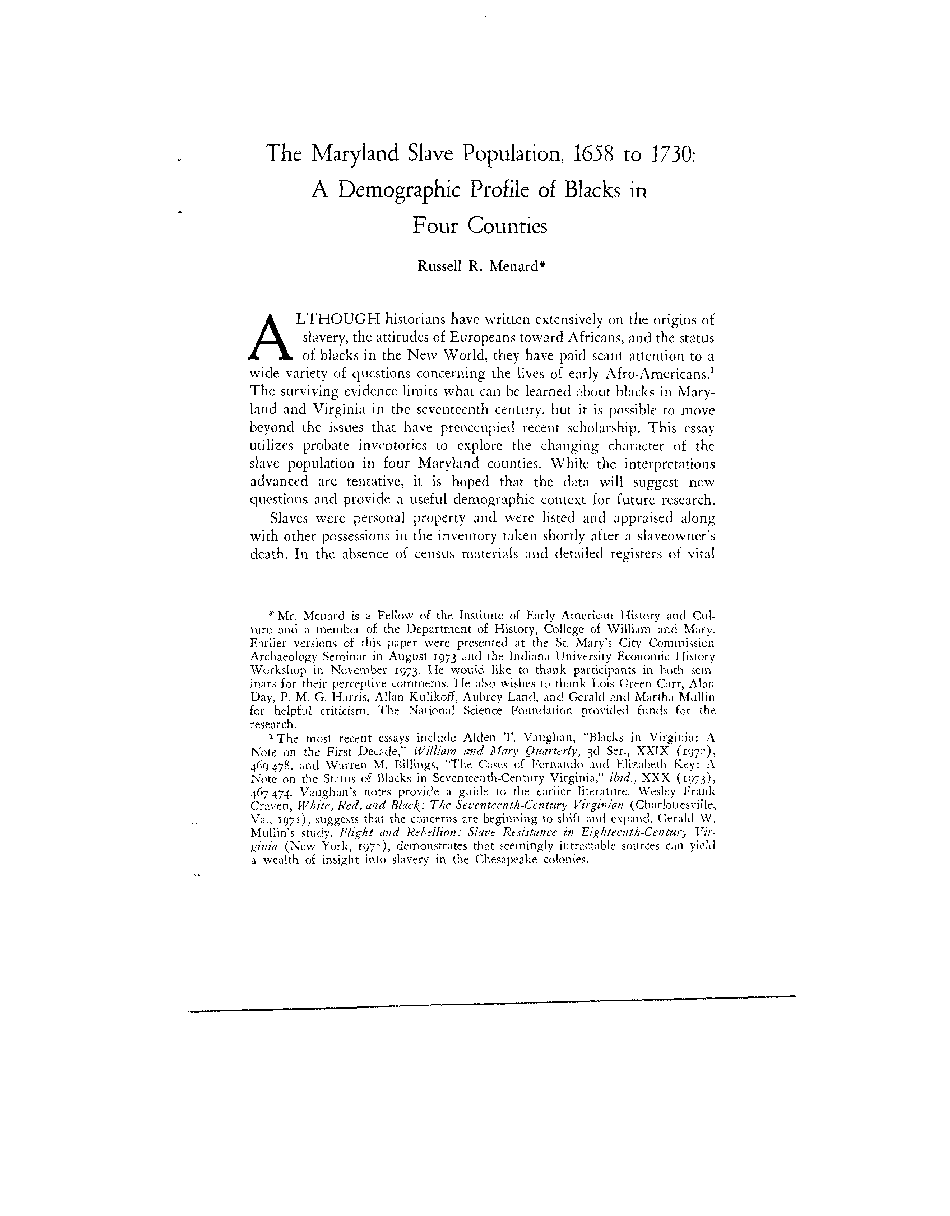|
The Maryland Slave Population, 1658 to 1730:
A Demographic Profile of Blacks in
Four Counties
Russell R. Menard*
ALTHOUGH historians have written extensively on the origins of
slavery, the attitudes of Europeans toward Africans, and the status
of blacks in the New World, they have paid scant attention to a
wide variety of questions concerning the lives of early Afro-Americans.1
The surviving evidence limits what can be learned about blacks in Mary-
land and Virginia in the seventeenth century, but it is possible to move
beyond the issues that have preoccupied recent scholarship. This essay
utilizes probate inventories to explore the changing character of the
slave population in four Maryland counties. While the interpretations
advanced are tentative, it is hoped that the data will suggest new
questions and provide a useful demographic context for future research.
Slaves were personal property and were listed and appraised along
with other possessions in the inventory taken shortly after a slaveowner's
death. In the absence of census materials and detailed registers of vital
* Mr. Menard is a Fellow of the Institute of Early American History and Cul-
ture and a member of the Department of History, College of William and Mary.
Earlier versions of this paper were presented at the St. Mary's City Commission
Archaeology Seminar in August 1973 and the Indiana University Economic History
Workshop in November 1973. He would like to thank participants in both sem-
inars for their perceptive comments. He also wishes to thank Lois Green Carr, Alan
Day, P. M. G. Harris, Allan Kulikoff, Aubrey Land, and Gerald and Martha Mullin
for helpful criticism. The National Science Foundation provided funds for the
research.
1 The most recent essays include Alden T. Vaughan, "Blacks in Virginia: A
Note on the First Decade," William and Mary Quarterly, 3d Ser., XXIX (1972),
469-478, and Warren M. Billings, "The Cases of Fernando and Elizabeth Key: A
Note on the Status of Blacks in Seventeenth-Century Virginia," ibid., XXX (1973),
467-474. Vaughan's notes provide a guide to the earlier literature. Wesley Frank
Craven, White, Red, and Black,: The Seventeenth-Century Virginian (Charlottesville,
Va., 1971), suggests that the concerns are beginning to shift and expand. Gerald W.
Mullin's study, Flight and Rebellion: Slave Resistance in Eighteenth-Century Vir-
ginia (New York, 1972), demonstrates that seemingly intractable sources can yield
a wealth of insight into slavery in the Chesapeake colonies.
�
|

